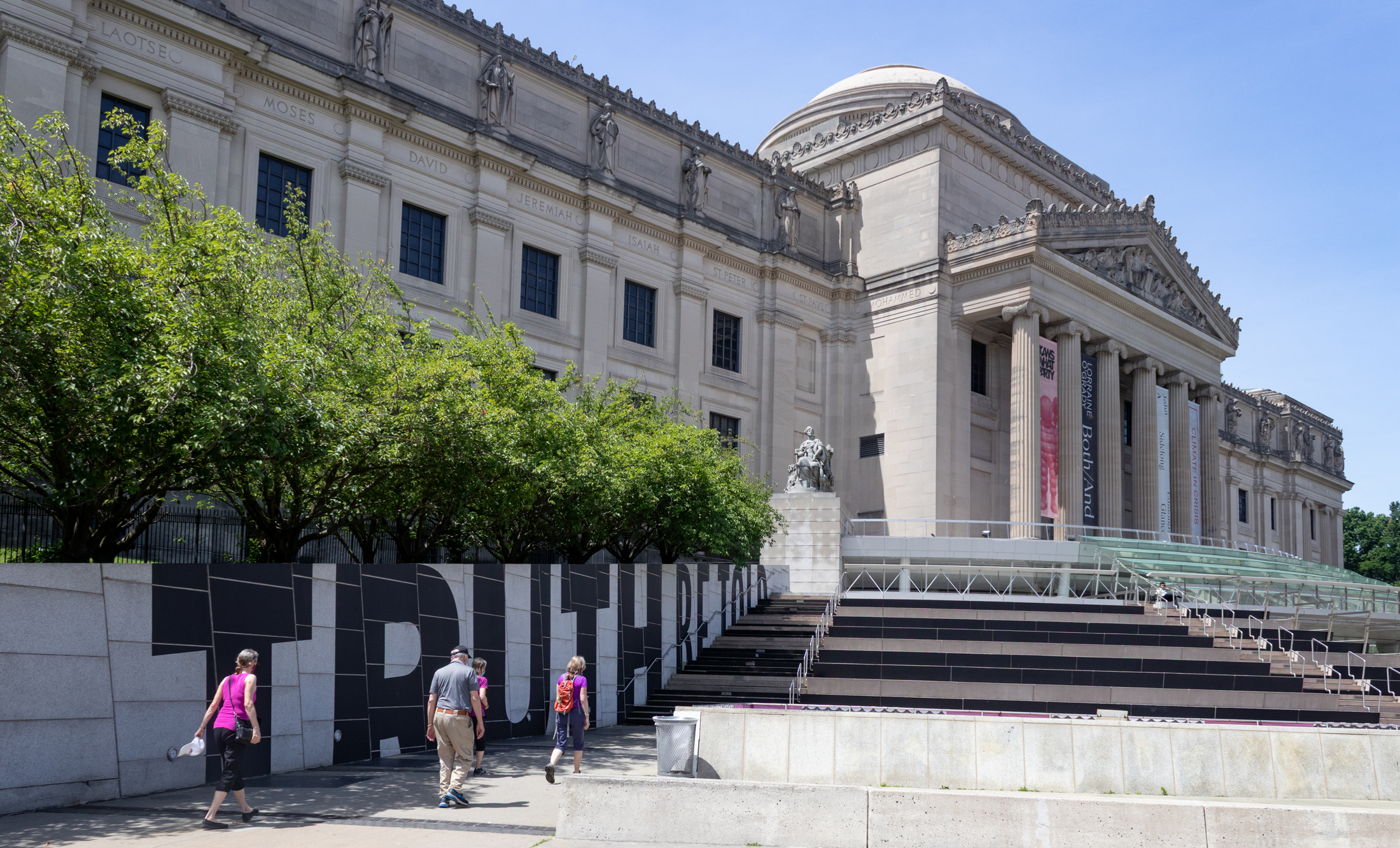Queenswalk: Glendale’s Atlas Terminal
In my past life, I used to work in the garment industry. In fact, much of my work history in New York City was in that industry, in one capacity or another, until the economy crashed in 2008. When I was first starting out, back in the 1980s, I used to work in Soho for…


In my past life, I used to work in the garment industry. In fact, much of my work history in New York City was in that industry, in one capacity or another, until the economy crashed in 2008. When I was first starting out, back in the 1980s, I used to work in Soho for a small design company. This was back when some of the buildings there were starting to become artists’ lofts, and retail spaces were being carved out of the ground floors of others. But at that time, most of Soho still hummed with industry, much of it garment related. It was so much different than the urban shopping mall it is today.
One of the businesses near my job was a scrap processing company. “Waste” is what this is often called, the gathering and reprocessing of scrap fabric from cutting rooms, damaged goods, rags, etc. that can be reused for various purposes. If you think about how many millions of yards of fabric are spread out and cut up into clothing, bedding, furniture covers, tabletop, and bath, whatever… you can imagine that just there alone, you’d have tons of scrap. That scrap can be further cut up into fill for mattresses or upholstery, or broken down and reprocessed into new fabric for all kinds of uses. We used to see large, compressed bundled pallets of scraps leaving their place all day long, being loaded into trucks and taken away for processing.
This waste, when reprocessed into new fabric was also called “shoddy.” Because it was a lesser composite fabric, often used for the most utilitarian purposes, and not as strong as newly woven goods, the adjective “shoddy” became a common word in referring to inferior goods, work or product. That name is as old as the mid-19th century. The waste industry was huge in a city like New York, where the garment center was king, and one of the driving engines of the New York City economy. The industry got the nickname “the rag trade,” but specifically, the men who dealt in scrap became known as “rag pickers”, or “ragmen.” That may have sounded derogatory, but who cares? As we shall see, a ragman could become rich.
Henry Hemmerdinger was one of those who saw the promise of a good life in the rag trade, and expanded on his success to become one of Queens’ largest employers. In 1888, his father, Morris Hemmerdinger, and the rest of his family came to New York, along with thousands of other immigrants, to make new lives for themselves. Like many other Jewish immigrants, Morris found himself in the growing garment industry. He became a ragman, buying scrap from cutting rooms and factories, and re-selling it to other companies. Some scrap became rags in other factories to mop up oils and liquids, and some scrap he sold to upholsterers for stuffing.
Eventually, Morris decided to stop being a middleman, and process the waste, as well as gather it. With capital he had saved, he opened the Atlas Waste Manufacturing Company, Inc. The company factory was located in East Williamsburg, Brooklyn. Morris died in 1907, and his business was taken over by his son Henry. Henry was a young go-getter, and after marrying in 1913, and having their only child, Monroe, in 1917, the Hemmerdinger family would leave Brooklyn and move to Queens in 1921. They chose Forest Hills Gardens, and were the first Jewish family to buy a home in that neighborhood.
A year later, the now 42 year old Henry was looking at expanding his Atlas Waste Manufacturing business. Queens was still largely undeveloped at that time, only very slowly losing farms and meadows to roads and buildings. Some pockets of Queens would remain rural well into the 1940s and 50s. In the 1920s, it was still possible to buy large tracts of farmland. Henry purchased a 22 acre farm tract with an old house and some outbuildings in the heart of Glendale. The outbuildings were industrial structures that had been used to manufacture the first underwater telephone cables for transatlantic communications. These building would be perfect to start. Hemmerdinger named his new complex the Atlas Terminals.
He set up his waste plant here, expanding into four buildings, covering over 300,000 square feet. At the height of his company’s success, he employed around 200 people, while his plant processed over 100 tons of fiber per day. The facility had 21 garnetting machines and a carbonized range for degreasing rags. Garnetting machines are huge cast-iron carding machines, with rollers and cylinders with metallic teeth. They rip up the scrap into threads and fiber, which can then be recycled into stuffing, or reprocessed into new fabric. Atlas was now one of the largest fabric recycling plants in the United States.
Henry still had a lot of land that he wasn’t using, and buildings that were not in use, so he wisely decided to rent out space to other companies. He built a garage for trucks, with an extensive repair facility for himself and his other tenants. At the time, trucks were not too reliable, and broke down easily. The garage assured everyone that if the truck could make it there, it would soon be back on the road. He also began building new buildings on the site. His architect was a local master mason named Oscar Zeigelmeier, whose last name, most appropriately, translates in German to “supervisor of a group of bricklayers.”
According to Henry’s great-granddaughter, Kate Hemmerdinger-Goodman, Henry would sometimes buy concrete from local manufacturers when then had “extra” left over from other jobs. Since concrete has a very short life after being mixed, it needed to be poured quickly. Henry would pick a site on his grounds and say “pour here,” and the concrete would be slathered into something approximating a square. “And that’s why, to this day,” she said, “some of the Terminal’s buildings have rather ‘creative’ shapes.”
Henry Hemmerdinger had other interests besides business. The business his father Morris had begun, and that he expanded upon, had made him extremely wealthy. He was able to enjoy the good life, and indulge in some of the day’s usual rich men’s hobbies. He loved yachting, and was a Commodore in the Knickerbocker Yacht Club. He was the proud owner of The Trial, a 100 foot power cruiser. His business interests included many varying organizations, and he was a generous man to various charitable concerns.
Mr. Hemmerdinger was president of the Atlas Terminal Company, the Hemmerdinger Estate Corporation, the Mol-Mon Realty Company and the Greenway Supply Company. He was also a director of the Advertising Club of New York, the American Club of Cuba, and the Harmonie Club of New York. Cuban companies were among his largest clients for his fabric waste products. Henry was known to be a personable and generous man, especially to children. He was a director of the Queens Children’s Shelter, and a director of Jamaica Hospital, as well.
By the time of his death in 1946, at the age of 66, Henry Hemmingdinger had certainly done well with his father’s legacy. The Atlas Terminal had grown from four buildings to thirty-one, with a whopping 786,000 square feet of space. The companies there employed several thousand people, making Atlas Terminal a major Queens employer. Henry left the business to his only child, his son Monroe. Next time, we’ll look at Monroe’s contribution to Atlas Terminal, and the fate of the site. Is there still manufacturing in Atlas Terminal? Is there still an Atlas Terminal at all? GMAP
(Above photograph: Atco.com.The source for much of this article is a piece in the “Juniper Berry” published by the Juniper Park Civic Association, as well as the NY Times, Atco, and other sources)










What's Your Take? Leave a Comment